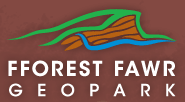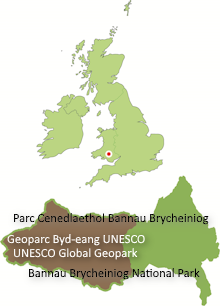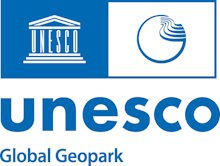‘Geopark’ – what’s in a name?
Answer: Contrary to what might be thought, ‘geopark’ is not short for ‘geological park’. ‘Geo’ comes from the Greek word for earth. A Geopark is about all the aspects of an area’s heritage – wildlife, history, archaeology, the built environment, myth and culture and so on. Of course all this is eventually underpinned by geology – human activities are shaped by landscapes (and vice versa) – but there’s much more than rocks to a Geopark.
What is the difference between a Geopark and a National Park?
Answer: The fifteen National Parks of Wales, England and Scotland were set up under various pieces of legislation to protect the nation’s finest landscapes and to help people enjoy their special qualities. There are currently eight Geoparks in the United Kingdom – their role is similar to National Parks but the emphasis is on business and communities working together to make the most of their natural and cultural heritage and thereby bring economic benefits to those areas. Unlike National Parks, Geoparks have no town and country planning functions – though they do support conservation initiatives.
Why set up a Geopark here?
Answer: The area has an outstanding geological heritage and a series of organisations, communities and individuals who wish to make the most of this asset. One aim is to increase the prosperity of the area, not least through the promotion of sustainable tourism opportunities based on an improved understanding both by residents and visitors of the natural and cultural heritage.
Why doesn’t it cover the whole of the National Park?
Answer: Although there are common themes to the geology and culture of the entire Bannau Brycheiniog National Park (formerly Brecon Beacons National Park), it is in the west that communities face greater economic challenges. Designation of the Geopark across the western half of the National Park is intended to provide a boost to those communities.
Who runs the Geopark?
Answer: It is run by a partnership of organisations representing different interests. The lead partner is the Bannau Brycheiniog National Park Authority and the two other ‘core’ partners are the British Geological Survey and Cardiff University. Many other partners contribute in a variety of ways to the life of the Geopark.
Who pays for the Geopark?
Answer: The core budget is provided by the Bannau Brycheiniog National Park Authority though other organisations contribute both financially and ‘in kind’. Individual projects such as the refurbishment of the Waterfalls Centre in 2008 have been achieved through grant assistance from funding bodies such as the Aggregates Levy Sustainability Fund for Wales, whilst the establishment of a new Geopark presence at Craig-y-nos in 2021 was funded by Welsh Government.
Who owns the Geopark?
Answer: Just like the National Park, the place is owned by a myriad of both public and private landowners. Access arrangements to the Geopark are the same as for the National Park and any other area of Wales or England.



